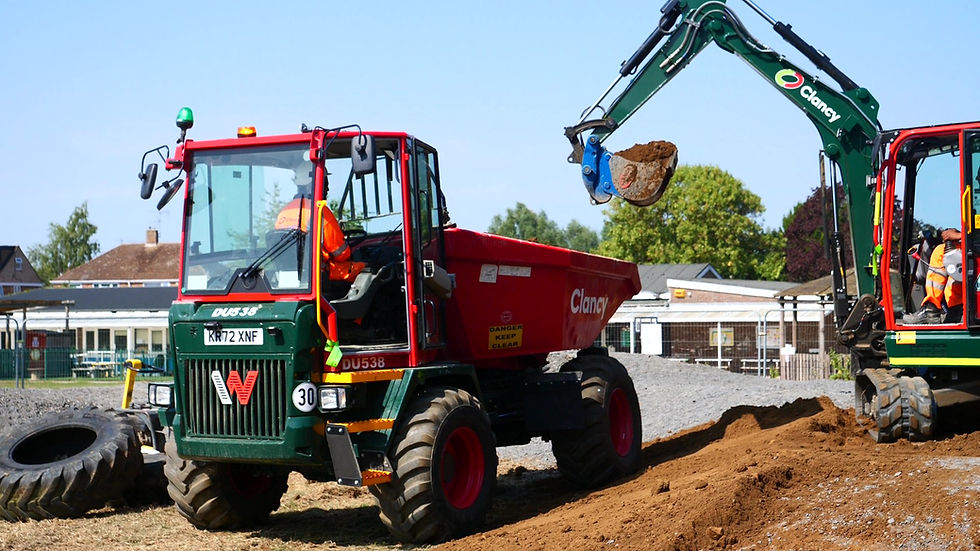Celebrating 10 million times over: 10 million m3 of earthworks achieved
- EKFB
- Jul 26, 2022
- 3 min read
This month marks a huge milestone for the EKFB team and its supply chain partners, as we celebrate 10 million m3 of earth excavated since the start of construction in spring 2021.
That’s the equivalent of, on average, 625,000 m3 every month since works started and a third of our overall target. In total, our earthworks team will shift around 50 million m3 of material over the life of the project.

Earthworks Director, Mark Harrington, is proud of the team, saying: “This has been a valiant effort and one to be celebrated. Earthworks on this scale has not been done in the UK before, and it’s required a lot of hard work by our teams to achieve this milestone. To put it into context, if we took all the material we expect to move on our section and heaped it up on a football pitch, we would have a pile almost 10km high. Thank you to everyone that has helped make this happen.”
Project Director, Emmanuel Rossignol, said: “We’re delivering an unprecedented programme of earthworks and to reach a substantial milestone just 16 months on is a great achievement for all involved. The team’s commitment and hard work is what has led us to this milestone moment. Keep up the great work!”
HS2 Project Client Director, Rohan Perin, commented:“Our C23 Integrated Project Team has achieved an extraordinary milestone, well done to everyone involved. Without earthworks, we cannot build HS2 Phase 1 – it's a crucial aspect in the success of delivering HS2. This largescale programme is a once-in-a-lifetime project and I know we’ll all look back in time to come and be extremely proud of milestones such as this.”
Most of the excavated material remains on site and will be used to backfill the green tunnel excavations, build embankments, landscape bunds, causeways and roads.
One of the biggest challenges the earthworks team has encountered is in the type of material we’re excavating, from limestone to clay and chalk, material type and what it can be used for, differs from section-to-section.
Along our line of route, our scope of earthworks includes 47 cuttings and 28 embankments, which will help minimise noise for local communities and reduce visual impact on the countryside.
Turweston cutting, in Northamptonshire, is the largest in volume. So far over 400,000 m3 has been excavated which has taken us to a depth of 10m; another 1.5m m3 will be removed in the next 18 months. Excavation will commence in our longest cutting, situated in Calvert, this autumn. At 3.4km long, the Calvert cutting will have five overbridges and three culverts. Our deepest cutting is located at Ladbroke, South Warwickshire, at 26 metres deep. Excavation will commence there next month.
There are many great examples of excavation along the trace, including Chipping Warden (G2S), where the ‘cut and cover’ tunnel is at almost 100m in length, Wendover Dean Viaduct (NCA), where bored piling is well underway and South Heath Cutting, where Align meets EKFB; here, more than 640,000m3 of earth will be removed to make way for HS2’s tunnel boring machine when it breaks through.
The earth-moving operations requires plant including excavators, dozers, compactors, and articulated dump trucks which can carry up to 60 tonnes in each load. Specialist machinery used includes graders to maintain the haul roads, water bowsers to control dust and stabilisation mixers to treat material with lime to improve its quality. At peak, we will require over 1,200 items of plant on the earthworks operations alone.





